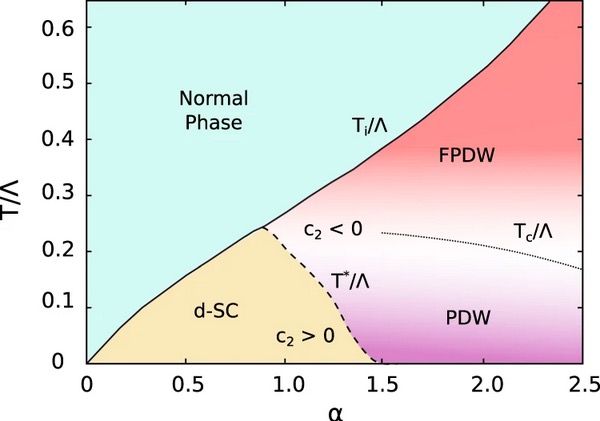Mechanism for fluctuating pair density wave in Nature Communications
ISC researcher L. Fanfarillo coauthored an interesting article now published in Nature Communications, C. Setty, L. Fanfarillo and P. J. Hirschfeld Nat. Comm. 3181 (2023).
The instability temperature for the d-wave superconductor, Ti, defines the transition from a Fermi liquid (light blue) to the SC state. At weak coupling the pairing state is a homogeneous d-wave superconductor (gold). Increasing α the system develops critical fluctuations at finite momentum and the d-wave SC state becomes unstable toward a non-homogeneous SC state (pink and purple regions).
In weakly coupled BCS superconductors, only electrons within a tiny energy window around the Fermi energy, EF, form Cooper pairs. This may not be the case in strong coupling superconductors such as cuprates, FeSe, SrTiO3 or cold atom condensates where the pairing scale, EB, becomes comparable or even larger than EF. In cuprates, for example, a plausible candidate for the pseudogap state at low doping is a fluctuating pair density wave, but no microscopic model has yet been found which supports such a state. In this work, we write an analytically solvable model to examine pairing phases in the strongly coupled regime and in the presence of anisotropic interactions. Already for moderate coupling we find an unusual finite temperature phase, below an instability temperature Ti, where local pair correlations have non-zero center-of-mass momentum but lack long-range order. At low temperature, this fluctuating pair density wave can condense either to a uniform d-wave superconductor or the widely postulated pair-density wave phase depending on the interaction strength. Our minimal model offers a unified framework to understand the emergence of both fluctuating and long range pair density waves in realistic systems.



